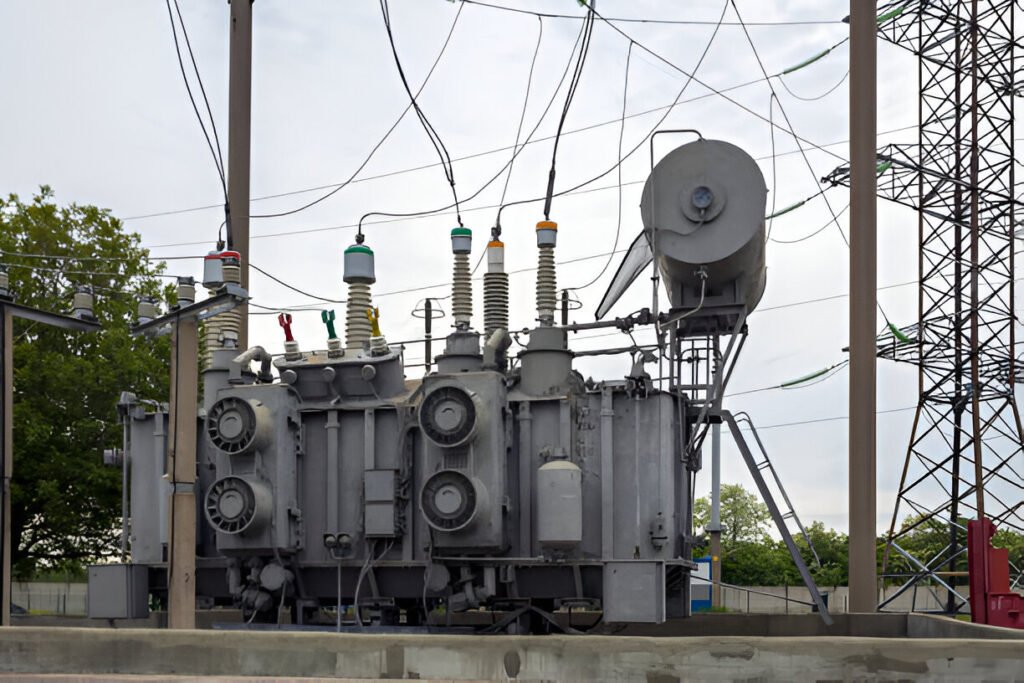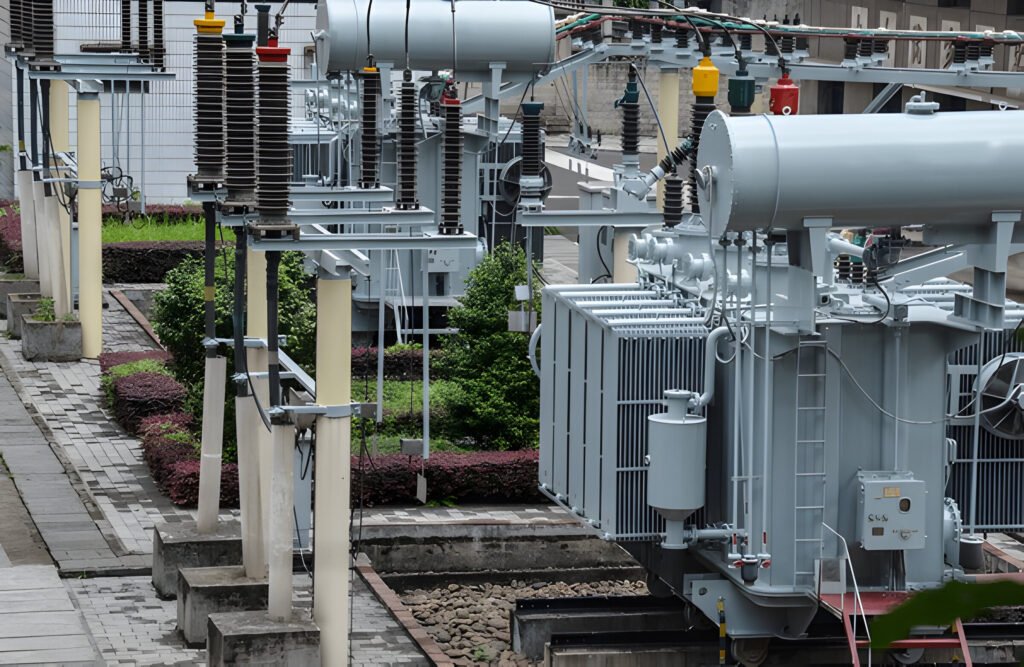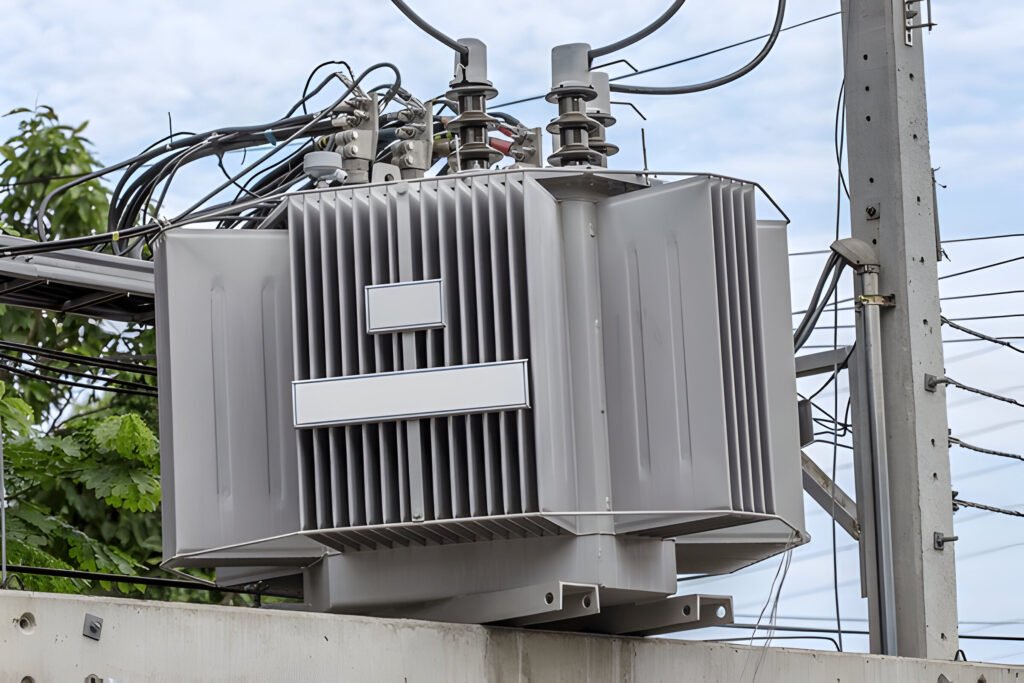What Is the Difference Between a Control Transformer and a Voltage Transformer
Write a meta description with 1 sentence for ”
What Is the Difference Between a Control Transformer and a Voltage Transformer
“, less than 120 characters.

A high voltage power transformer is a critical component in electrical power transmission and distribution systems. It is designed to efficiently transfer electrical energy between circuits while stepping up or down the voltage levels to meet specific requirements. In this comprehensive guide, we will delve into the functions, components, types, selection criteria, and maintenance of high voltage power transformers.

A high voltage power transformer is an electrical device designed to step up or step down voltage levels in power transmission and distribution systems. These transformers typically operate at voltages above 33 kV and are essential components in the efficient and reliable transfer of electrical energy from power generation plants to end-users.
High voltage power transformers are designed to withstand the stresses and demands of high voltage applications. They are constructed using high-quality materials, such as copper or aluminum windings, and are often immersed in insulating oil to improve cooling and insulation properties. These transformers also incorporate various protective devices, such as surge arresters and temperature sensors, to ensure safe and reliable operation.
A high voltage power transformer operates on the principle of electromagnetic induction to step up or step down voltage levels in electrical power transmission and distribution systems. The transformer consists of two main components: the primary winding and the secondary winding, both wound around a common magnetic core.
When an alternating current (AC) is applied to the primary winding, it creates a varying magnetic field in the core. This magnetic field induces an electromotive force (EMF) in the secondary winding, generating an output voltage. The ratio of the number of turns in the primary winding to the number of turns in the secondary winding determines the voltage transformation ratio.
In a step-up transformer, the secondary winding has more turns than the primary winding, resulting in a higher output voltage. Conversely, in a step-down transformer, the secondary winding has fewer turns than the primary winding, leading to a lower output voltage.

A high voltage transformer consists of several essential components that work together to ensure efficient and reliable power transformation. These components include the transformer core, windings, insulation, cooling system, protective casing, and tap changers.
Single-phase high voltage power transformers are commonly used in distribution networks, commercial buildings, and specialized loads. These transformers have one primary winding and one secondary winding, allowing them to step down high voltage to a lower voltage suitable for the connected load. Single-phase transformers are available in a wide range of power ratings, typically up to 833 kVA, and can be designed for various primary and secondary voltages to meet specific application requirements.
Single-phase high voltage transformers offer several advantages, including lower cost, simpler installation, and easier maintenance compared to three-phase transformers. They are well-suited for applications such as lighting systems, small industrial equipment, and rural power distribution. However, single-phase transformers may have limitations in terms of power capacity and efficiency when compared to three-phase transformers in larger, more demanding applications.
Three-phase high voltage power transformers are the workhorses of the electrical power industry, used in power plants, transmission systems, and large industrial facilities. These transformers have three sets of primary and secondary windings, allowing them to handle higher power levels and provide a more efficient and economical solution for bulk power transmission and distribution.
Three-phase transformers are available in a wide range of power ratings, from a few MVA to hundreds of MVA, and can be designed for various voltage levels, including extra high-voltage (EHV) applications. They offer several advantages over single-phase transformers, such as higher power density, improved voltage regulation, and better load balancing capabilities.
Three-phase transformers can be further classified into two main categories: liquid-immersed transformers and dry-type transformers. Liquid-immersed transformers use insulating oil for cooling and insulation, making them suitable for outdoor installations and high-power applications. Dry-type transformers, on the other hand, rely on air cooling and are often used indoors or in environments where the use of insulating liquids is not desirable.

To begin, select a core material with high magnetic permeability, such as grain-oriented silicon steel. Cut the steel into thin laminations and stack them together to form the core. Insulate the core with a layer of varnish or insulating tape to reduce eddy current losses.
Next, wind the primary and secondary coils using insulated copper wire. The primary winding typically has fewer turns of thicker wire, while the secondary winding has more turns of thinner wire. Ensure proper insulation between the windings and the core to prevent short circuits and maintain electrical safety.
Install insulating barriers between the primary and secondary windings to prevent arcing and improve reliability. Use high-quality insulation materials, such as Nomex or Mylar, to withstand the high voltages generated by the transformer.
Incorporate a cooling system to dissipate heat generated during operation. For smaller transformers, air cooling may suffice, while larger units may require oil immersion or forced-air cooling. Ensure proper ventilation and heat dissipation to prevent overheating and extend the transformer’s lifespan.
Protect the transformer with a durable casing, such as a steel enclosure, to shield it from environmental factors and physical damage. Include appropriate bushings and terminals for connecting the primary and secondary windings to external circuits.
Finally, test the transformer to ensure it meets the desired specifications, including voltage ratio, power capacity, and insulation resistance. Use specialized test equipment, such as a high-voltage insulation tester and a transformer turns ratio meter, to verify performance and safety.
Throughout the manufacturing process, adhere to relevant industry standards, such as IEEE C57.12.00 for liquid-immersed power transformers and IEEE C57.12.01 for dry-type transformers.
Consider the following factors when choosing a high voltage transformer:
Determine the primary and secondary voltage ratings required for your application. High voltage transformers typically have primary voltages ranging from 34.5 kV to 765 kV, while secondary voltages can vary depending on the specific requirements of the load. Ensure that the transformer’s voltage ratings are compatible with your power source and the connected equipment.
Assess the power requirements of your load to determine the appropriate kVA or MVA rating for the transformer. High voltage transformers are available in a wide range of power ratings, from a few hundred kVA to several hundred MVA. Select a transformer with a power rating that can handle the maximum demand of your load while allowing for future growth.
Most power systems operate at either 50 Hz or 60 Hz, while some specialized applications, such as aviation or military equipment, may require 400 Hz transformers. Ensure that the transformer’s frequency rating matches your power source to avoid compatibility issues and potential damage to the equipment.
Evaluate the transformer’s impedance and regulation characteristics to ensure proper voltage regulation and short-circuit protection. The impedance of a transformer determines its ability to limit short-circuit currents, while regulation refers to the transformer’s ability to maintain a stable output voltage under varying load conditions. Consult the IEEE C57.12.00 standard for guidance on selecting the appropriate impedance and regulation values for your application.
Choose a transformer with an appropriate insulation class and temperature rise rating to ensure reliable operation and longevity. The insulation class determines the maximum operating temperature of the transformer, while the temperature rise rating indicates the allowable increase in temperature above the ambient temperature. Higher insulation classes and lower temperature rise ratings generally indicate a more robust and durable transformer design.
Select the appropriate cooling method for your high voltage transformer based on the power rating, installation environment, and maintenance requirements. The most common cooling methods for high voltage transformers include:

The MVA (megavolt-ampere) rating of a transformer is a critical factor in determining its capacity to handle electrical loads. Calculating the MVA of a transformer involves considering the primary and secondary voltages, as well as the current requirements of the connected equipment. To accurately determine the MVA rating, follow these steps:
Low-voltage (LV) and high-voltage (HV) transformers differ primarily in their voltage ratings and applications. LV transformers typically handle voltages up to 1,000 volts, while HV transformers are designed for voltages exceeding 1,000 volts.
LV transformers are commonly used in residential, commercial, and light industrial settings for power distribution, lighting, and small-scale electrical equipment. They are essential components in stepping down the voltage from the main supply to levels suitable for end-user devices. LV transformers come in various sizes and configurations, such as single-phase and three-phase, to meet the specific requirements of different loads.
HV transformers are used in power transmission networks, power plants, and substations. They are crucial for stepping up the voltage generated by power sources to facilitate efficient long-distance transmission and then stepping it down for distribution to end-users. HV transformers handle much higher power ratings, often measured in MVA (megavolt-amperes), compared to LV transformers, which are typically rated in kVA (kilovolt-amperes).
Low voltage transformers typically handle voltages up to 1,000 volts (1kV). They are commonly used in residential, commercial, and light industrial settings for applications such as lighting, small appliances, and control circuits. Low voltage transformers are available in single-phase and three-phase configurations, with power ratings ranging from a few kVA to several hundred kVA. These transformers often feature dry-type insulation, making them suitable for indoor installations where fire safety is a concern.
Medium voltage transformers operate in the range of 1,000 volts (1kV) to 69,000 volts (69kV). They are widely used in distribution networks, industrial facilities, and large commercial buildings. Medium voltage transformers play a crucial role in stepping down high voltages from transmission lines to levels suitable for local distribution and utilization. These transformers are available in both dry-type and liquid-filled designs, depending on the specific application requirements and environmental factors. They offer higher power ratings compared to low voltage transformers, typically ranging from a few hundred kVA to several MVA.
High voltage transformers handle voltages above 69,000 volts (69kV) and are primarily used in transmission systems and large-scale power generation plants. These transformers are designed to step up the voltage from power plants to facilitate efficient long-distance transmission, minimizing power losses along the way. High voltage transformers are also used to step down the voltage at substations before distribution to end-users. Due to the high voltages involved, these transformers are usually oil-immersed to provide enhanced insulation and cooling properties. They have power ratings ranging from several MVA to hundreds of MVA, depending on the application requirements.
According to the IEEE Guide for Installation and Maintenance of Liquid-Immersed Power Transformers (IEEE C57.93-2019), regular inspections and preventive measures are key factors in avoiding costly equipment malfunctions and downtime.
To maintain a high voltage transformer, begin by establishing a routine inspection schedule. Visually examine the transformer’s exterior for signs of damage, corrosion, or oil leaks. Check the condition of the bushings, connectors, and other essential components. Regularly monitor the transformer’s operating temperature, as excessive heat can indicate internal issues or compatibility problems with the electrical supply.
Perform oil analysis at least annually to assess the condition of the transformer’s insulating oil. This test helps detect moisture, dissolved gases, and other contaminants that can compromise the transformer’s performance and lead to premature failure. If necessary, replace or filter the oil to maintain its dielectric properties and protect the transformer’s windings.
Inspect and clean the transformer’s cooling system, ensuring that fans, radiators, and oil pumps are functioning correctly. A malfunctioning cooling system can cause the transformer to overheat, leading to insulation breakdown and reduced lifespan. Additionally, check the operation of protective devices such as pressure relief valves, sudden pressure relays, and temperature gauges to ensure they are working as intended.